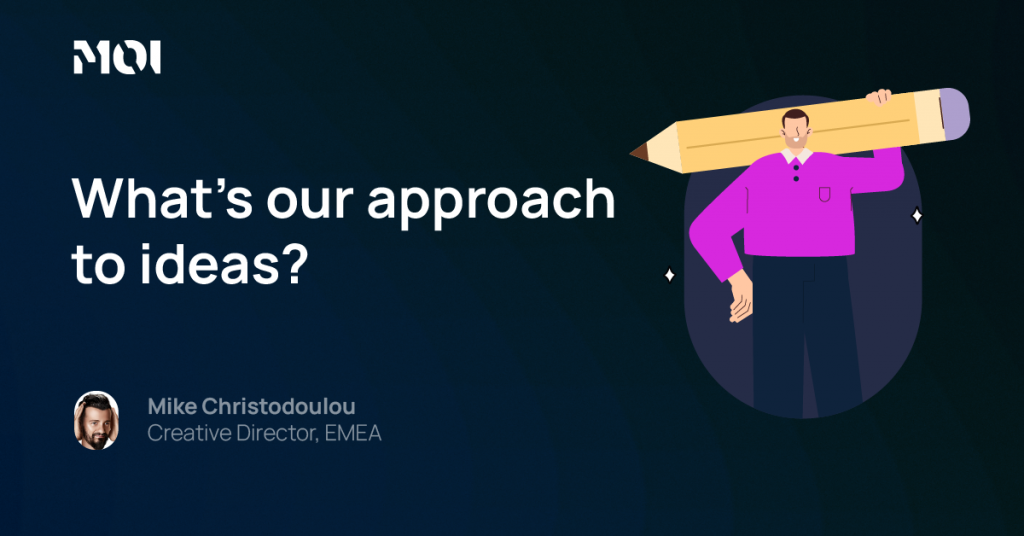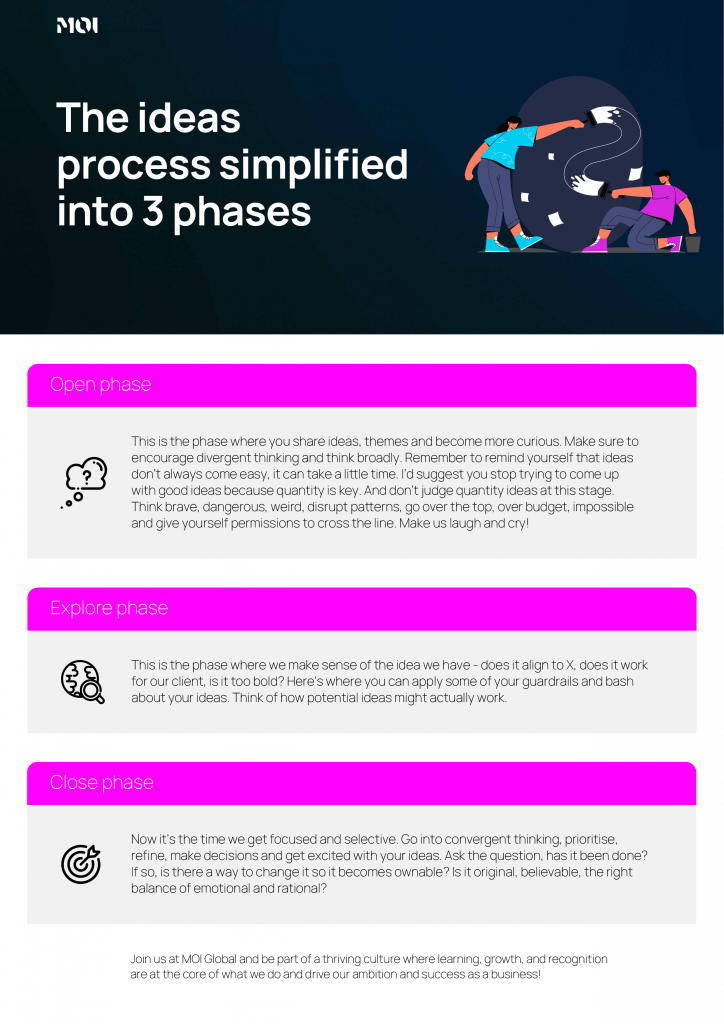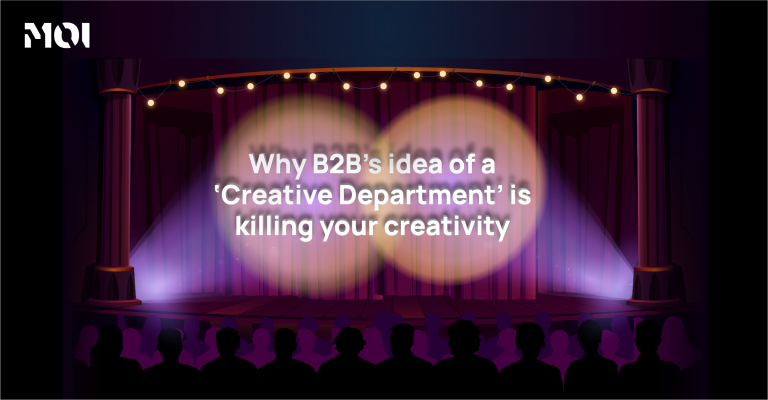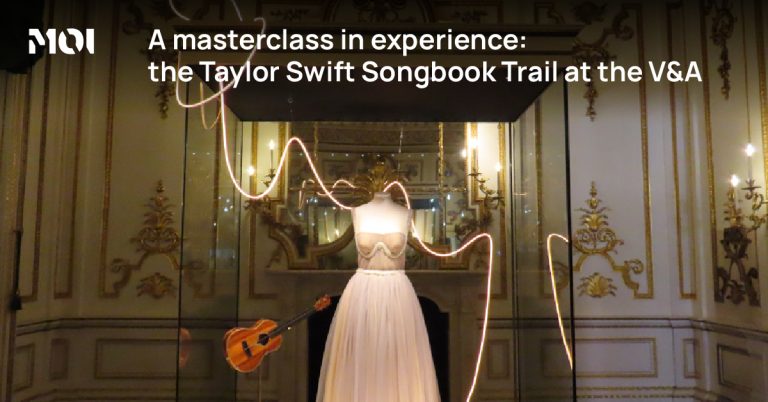
Ideas Made Simple
As a creative, how do you best ‘get an idea’ – and get the best ideas? Do you chase after each and every concept? Or do you just focus on a few standouts? There are countless opinions and it can get confusing. In this article MOI’s Creative Director Michael Christodoulou brings some clarity to the subject and shares some top tips on how you can receive those paradigm-shifting, million-dollar ideas with (relative) ease.
That Initial WTF Moment
You know that moment when you first get a brief and think WTF? And then, when you dive in, the ideas start flowing. When I ask creatives about their ideas process, they say don’t know where the ideas come from, “we just show up and do our thing and they just happen”.
I think part of it is because ideas come from everywhere and anywhere, at any moment. Your mind is like a bank of ideas, storing everything that catches your attention waiting for the right moment to strike.
How to Come up With Ideas
What I’ve found works is allowing yourself to be brave, weird, disruptive, over the top and permission to cross the line. Telling yourself “imagine if…” frees up your mind. It moves you from that pressure to have to create – to actually being open to more ideas and letting the ideas flow. With quantity will come quality.
Different creatives have different approaches, but there’s a common theme. Copywriter Michael James explains his creative process: “I go into the research phase, which is lots of reading and thinking and analysis. Then I find a way to distract or step back or change the subject. I go for a walk or do something else such as doing push ups,” he says: “This creates space within my thinking for the idea – which has been built and summoned in the research phase – to drop in.”
It’s that balance between thinking and then allowing the idea to arise. For designer Issie Debnam, she suggests: “Be curious at all times – not just at work! Take notice actively of things that grab your interest – go down those research rabbit holes and learn far too much about random things – It all adds up in that idea bank stored somewhere deep in your mind,” she says. She also notes the importance of play, saying “I like to give myself the permission to play. Get rid of the practical limitations in your mind and come up with the impossible and improbable, weird and wonderful. There will be little gems you can pick out after.”
Getting Into an Ideas Mindset
And so it’s all about finding a way to access your creativity. I’ve summarised some more ways here:
- 1. Date yourself - go out and treat yourself with a meal, a walk, some shopping. Make yourself feel a bit special which relieves you from the daily grind.
- 2. Get curious - jump into all the rabbit holes, read, research and observe everything. Question the why’s and the how’s. Look at what others do, look horizontally and laterally. Dive deep into theories, subjects, thoughts and scribble it all down.
- 3. Go back in time - every creative has a folder stashed away with hundreds of things that’s inspire them, from ideas, art, videos, funny, weird and shocking stuff. Experiences shape your ideas, from a conversation or a time you were stuck at the airport. Be inspired by everything you see.
And as a bonus: exercise your idea muscle (a theory by James Altucher called The Ideas Machine).Each day write ten ideas on any topic you can think of. For example, ten things I’ve learnt this week, ten things you can chat about if your cat could talk, ten things I’d change in spaces if we could crawl and not walk.
Mind mapping techniques
Before creating a mind map, gather together a diverse group of people and encourage everyone to contribute, reminding them that there are no bad ideas. And then begin the process. On your shared board, place the problem at the centre and try some of the following techniques to get a variety of ideas:
- Think about rational vs emotional ideas. Think of how to make it more personal. Combine things, substitute things and reverse the order. Think of metaphors. Adapt things and modify. Look at other industries and don’t forget to challenge the norm.
- Ask yourself, what would a famous brand do? Or a famous person? Expand on the ideas and look at it from a different perspective. List the pains and the gains. “Yes, and” allows you to build on the previous ideas. Frame it as a “how might we?” Question. Imagine if. Challenge assumptions. Draw parallels from other businesses. Just brainstorm the hell out of it. And have fun doing it!
See below for our simplified guide to the ideas process in just 3 phases!



